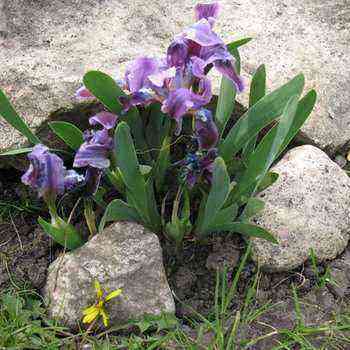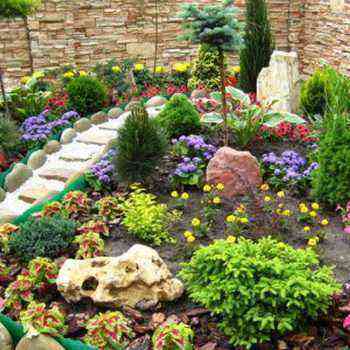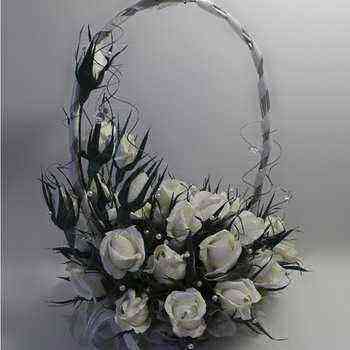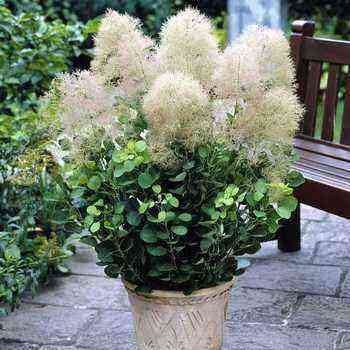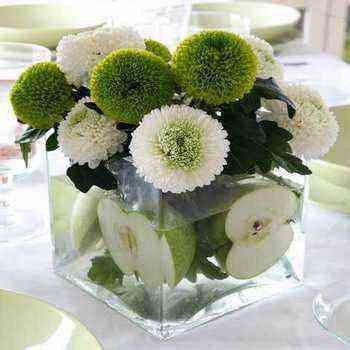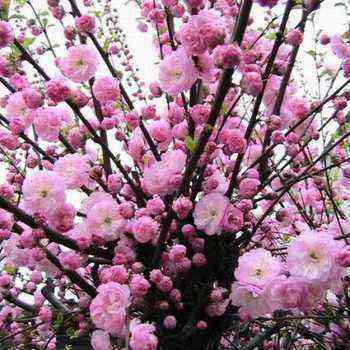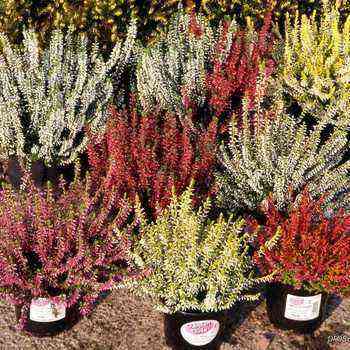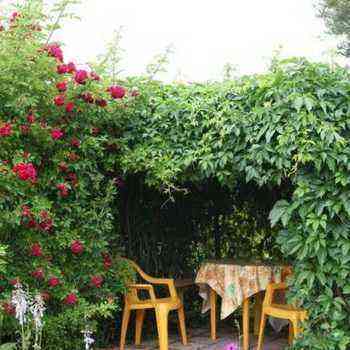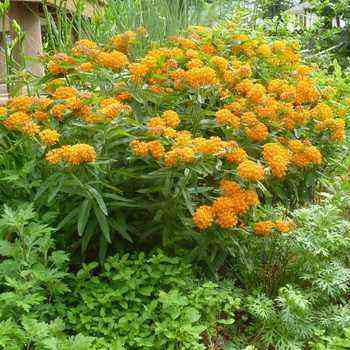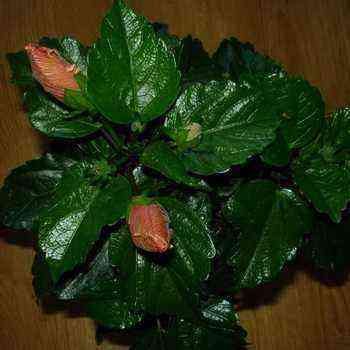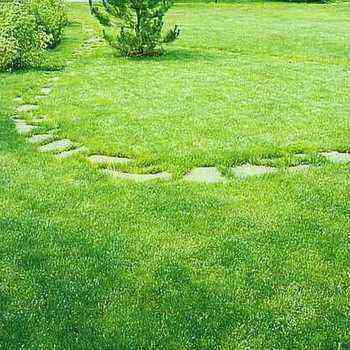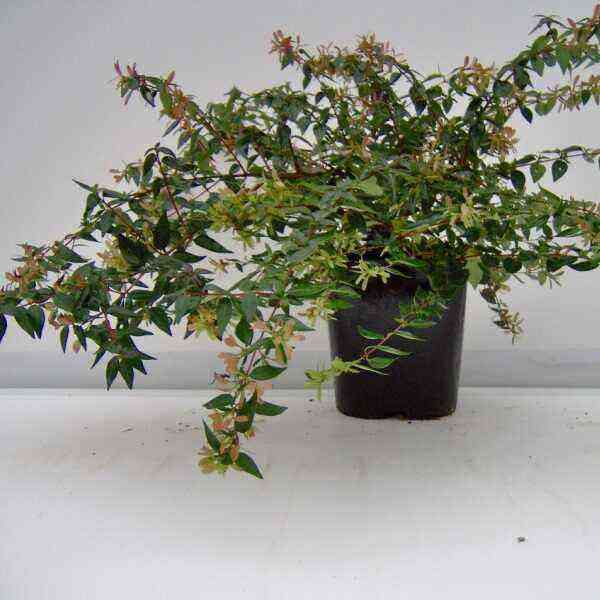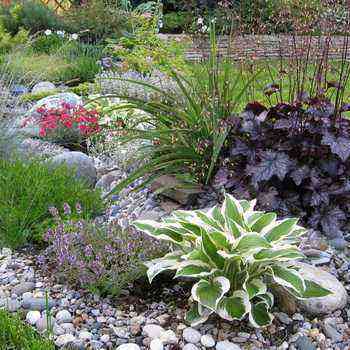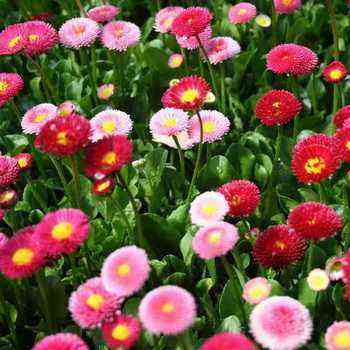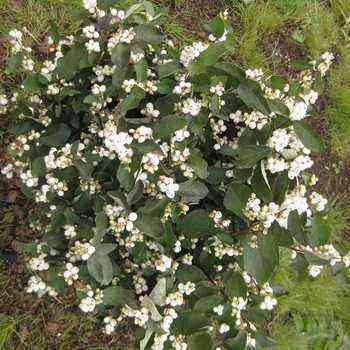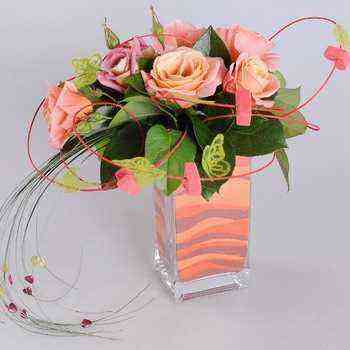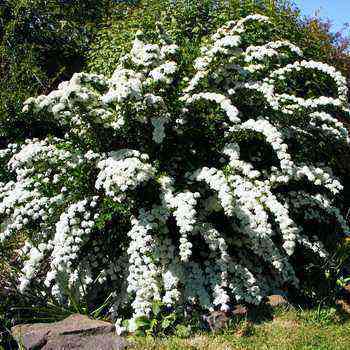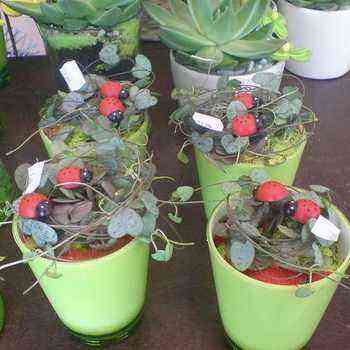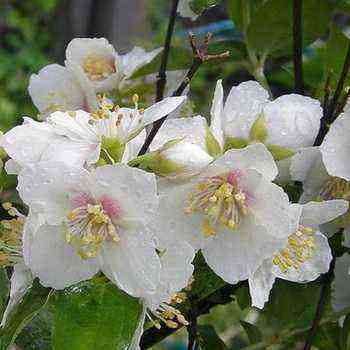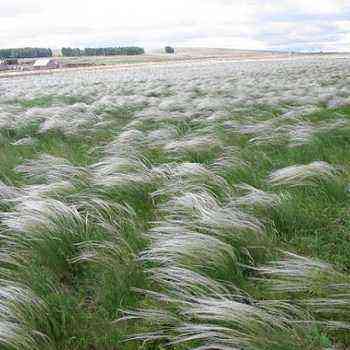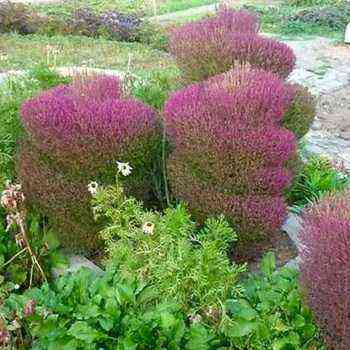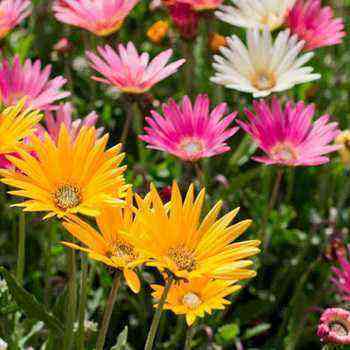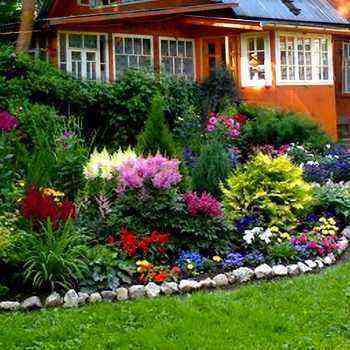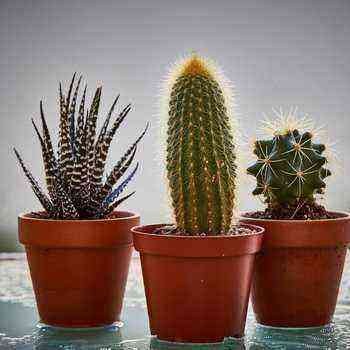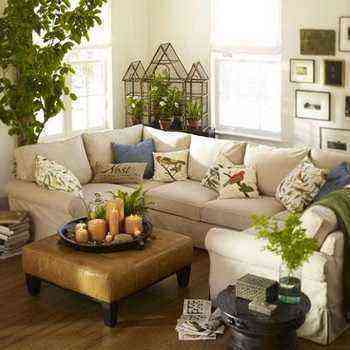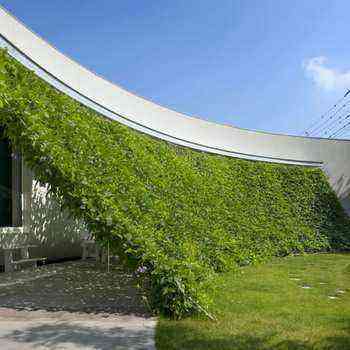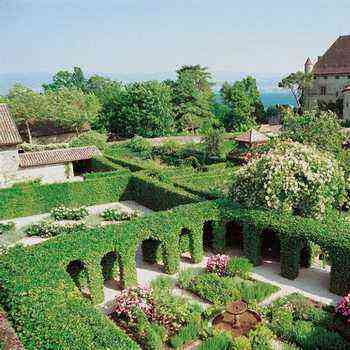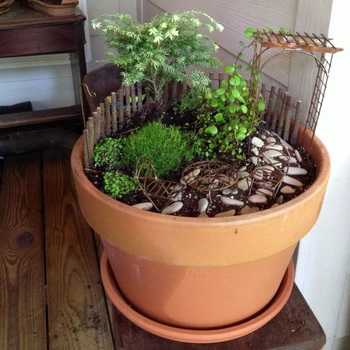 Any woman who is fond of floriculture can make a home garden with her own hands. You can organize a truly attractive indoor garden with your own hands only with the right choice of plants. Before making a home garden, you must carefully read the recommendations given on this page.
Any woman who is fond of floriculture can make a home garden with her own hands. You can organize a truly attractive indoor garden with your own hands only with the right choice of plants. Before making a home garden, you must carefully read the recommendations given on this page.
An indoor garden is a vessel containing more than one plant. Not a single pot is visible – they have been removed or hidden from view.
Indoor gardens are still rare. Colorful plants such as ever-flowering begonias or coleus can be placed in the house just like in the garden, but they are almost always grown in separate pots.
An indoor garden is a vessel in which more than one plant is grown, and in it, unlike a potted group, individual pots are not visible. It can be a simple bowl with a few plants, or a whole forest of greenery and flowers in a multi-tiered structure, but the basic principles remain the same. The plants are either removed from the pots and planted in a vessel, or the pots are preserved and masked with some kind of filling material.
Like the potting group, this is also a way to grow plants together. Both methods have a number of advantages. When plants are nearby, defects can be hidden, the humidity around the leaves increases, and watering becomes easier.
 The indoor garden also has its own unique advantages. This is where you truly do gardening – planting plants together to create a sense of “oneness.” The roots are better insulated, which helps to protect the plants from the cold in an unheated room in winter and from the scorching rays of the sun on the windowsill in the summer. Finally, if the pots are kept, there is a supply of water in the fill material.
The indoor garden also has its own unique advantages. This is where you truly do gardening – planting plants together to create a sense of “oneness.” The roots are better insulated, which helps to protect the plants from the cold in an unheated room in winter and from the scorching rays of the sun on the windowsill in the summer. Finally, if the pots are kept, there is a supply of water in the fill material.
Unfortunately, the indoor garden has several disadvantages compared to the potted group. It is easy to overmoisten the compost as there is no drain pan to drain off the flowing water when the plants are in the pots. The danger of waterlogging is increased if the plants are grown directly in the substrate in a bowl or box.
They cannot be rotated to ensure uniform growth and are not easy to remove when the plant needs to be replaced. However, there is something special about creating indoor gardens, and this style should certainly become more popular.
Indoor gardens and mini gardens
Indoor gardens are created in different styles, which involve the use of different containers for these purposes. Further, indoor mini-gardens are offered, which are the most convenient and functional in residential areas. You can choose a suitable indoor garden based on your own desires and opportunities for organizing it.


Standard box. The standard planting box is the main type of indoor garden. Don’t buy too many plants – go for larger ones so that their shape and leaves are not obscured by other plants. Instead of composting, place the plants directly in pots in the infill layer so they can be easily rotated or replaced if needed.
Be careful when watering. The box has no drainage holes and therefore waterlogging is a common problem. Keep the fill layer moist, but not wet. It is best to put a water level sensor in a box or buy a soil moisture indicator. You will find that the box requires less watering than individual plant pots.
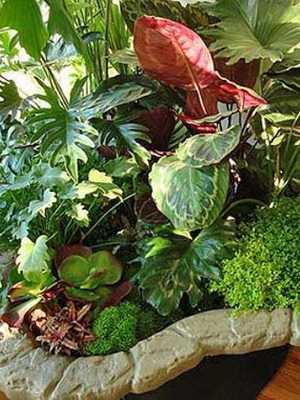
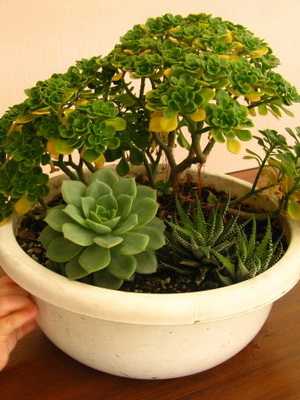
Artistic composition. A room garden of this type can be no larger than a standard box. The essential difference is that the art composition is made up of two or more containers, while the plants are on two or more levels.
You can use ready-made modules or buy separate containers and put them together. You can make your own container if you are a fan of handmade. Each lander can be viewed individually, both in terms of landing and leaving. The lowermost block of the composition shown in the illustration is planted with potted plants, which are replaced depending on the season – bulbous in spring, poinsettia at Christmas, etc. Tall specimens in the background form a permanent leafy background.
How to make a indoor garden (with photo)
And now it’s time to figure out step by step how to make a indoor garden in an apartment or in a house. To begin with, it is worth looking at the indoor garden in the photo, which show various options for these decorative designs:
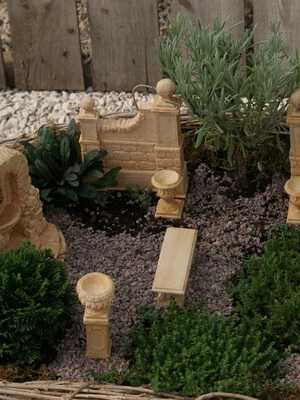
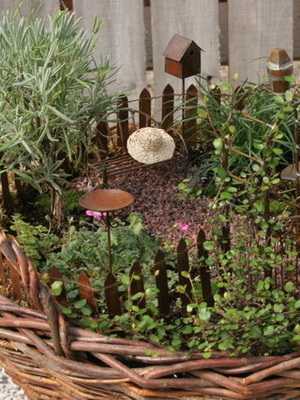
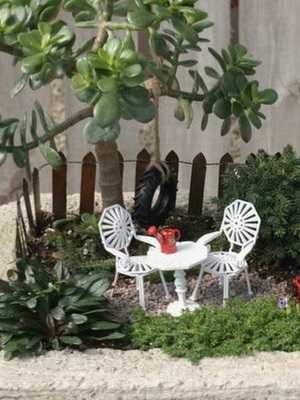
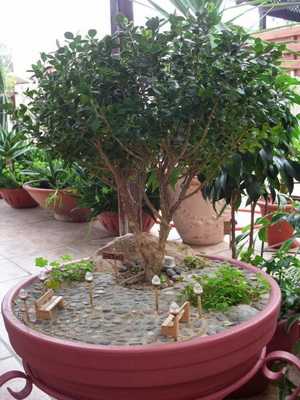
Six steps to successful indoor gardening:
1. Select a suitable box. Most store-bought boxes are simple oblong trays made of white, black, or green plastic. Wood and bamboo have more interesting surfaces, and a square or wide rounded shape gives more room for artistic arrangement. Any container that is tall enough can be used, but avoid patterned or brightly colored ones that can distract or compete with the plants.
2. Choose suitable plants. The first task is to find plants that have approximately the same requirements for light, heat and watering. It is unreasonable to expect succulents and ferns to grow well together. Usually one or more tall plants are chosen, several medium-sized plants, and then a few creeping and spreading ones to cover part of the edge of the box. Ornamental plants provide the base – flowering species are added to add color.
3. Create a drainage layer. Pour 5-8cm of gravel on the bottom of the box.
4. Place the pots in the drawer. Place a thin layer of filling material on top of the drainage layer and arrange the pots in the desired order. It is better to use clay pots, always with drainage holes. The tall pot can be placed directly on top of the fill material, but the smaller ones will need a stand to raise them to just below the edge of the drawer. You can put a small pot on an upside down empty pot.
5. Control of watering. There are automatic irrigation systems with a water level indicator, but you can make a water level sensor yourself. Install a tube in the box, the base of which should touch the bottom of the box. Insert a stick into the tube and use it as a probe. The water level should normally be below the top of the drainage layer.
6. Place the filling material around the pots. The final step is to fill the gaps between the pots with a layer of wet compost. This filling layer should completely fill the space between the drainage layer and the edge of the pots. The filling material should not be laid around the plant stems.
Indoor Plants Garden: Planting Recommendations
There are various planting guidelines that will help you make your indoor plant garden the most attractive. Make sure the height and shape of the plants are correct for the size of the box. Try to find plants with large differences in leaf shape.
In a small box, the height will be provided by a narrow vertical sansevieria or openwork grevillea and dizigoteka. The choice of tall plants for a large box is easier: palm trees, dracaena, ficus, monstera and philodendrons are popular.
Plants with colored leaves are suitable for a medium-sized box. Note the red leaves of the cordilina and the yellow leaves of scindapsus, chlorophytum, and ivy. Choose croton, coleus and royal begonia from plants with multicolored leaves.
Finally, the popular four ampelous plants are ivy, tradescantia, dwarf ficus and zebrina.
DIY hanging flowers in pots and their photos
 In most cases, hanging potted flowers should be placed at eye level or higher in order for their beauty to be appreciated. The pots can be placed on a stand or on a high shelf. But if you want to create a composition that will decorate the upper part of the room, use hanging baskets. Typically, baskets are hung in front of a window and on a long, bare wall where a bracket is used to hold the container. There are two types of hanging baskets. You can make your own hanging flowers in the form of standard waterproof containers hanging from a chain or wire, but plastic baskets with a built-in pallet are the best option.
In most cases, hanging potted flowers should be placed at eye level or higher in order for their beauty to be appreciated. The pots can be placed on a stand or on a high shelf. But if you want to create a composition that will decorate the upper part of the room, use hanging baskets. Typically, baskets are hung in front of a window and on a long, bare wall where a bracket is used to hold the container. There are two types of hanging baskets. You can make your own hanging flowers in the form of standard waterproof containers hanging from a chain or wire, but plastic baskets with a built-in pallet are the best option.
Ceiling or wall mounting must be secure. Use plants that grow in a soilless substrate and surround the pots with moist compost. Hanging baskets should not be left unattended – the air under the ceiling is warmer than elsewhere, so more frequent watering may be necessary. It is better to install a mechanism for lowering and raising the basket, but you can also use a pump shower head.
Don’t limit your choices to common ampelous plants such as ivy and dwarf ficus – include cascading flowering species such as fuchsias, bells and lobelia.

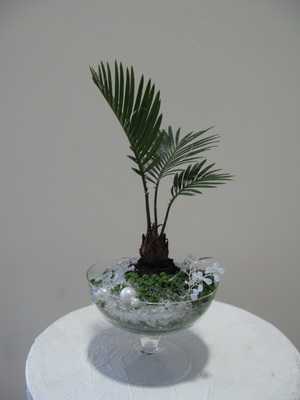
Pot-e-Fleur is a square or round vessel in which a small number of decorative leafy houseplants are grown in pot compost. Its unique feature is that in front of the tallest plant and between medium-sized plants, a deep glass or metal cylinder is inserted into the compost. Then it is filled with water and a small flower arrangement is placed in it. In this way, flowers from a garden or flower shop can be used to create an ever-changing and colorful composition.
It can be considered that Pot-e-Fleur is a composition of indoor plants with several seasonal flowers that add a touch of brightness to it.
The following are various pendant flowers in pots in the photo, illustrating the decor variations:
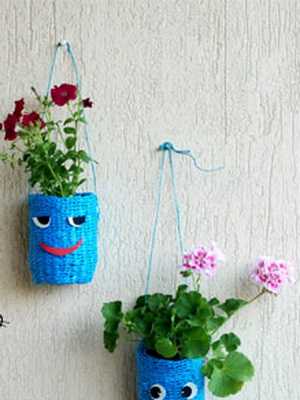
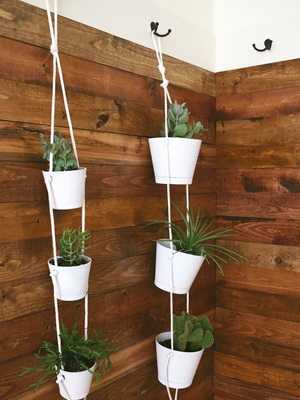

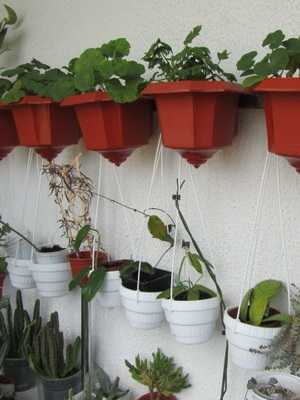
Mini gardens of indoor plants
You can create mini gardens from indoor plants to decorate a particular living area. For example, a garden of indoor plants can be placed on a wide dish or in a deep bowl.

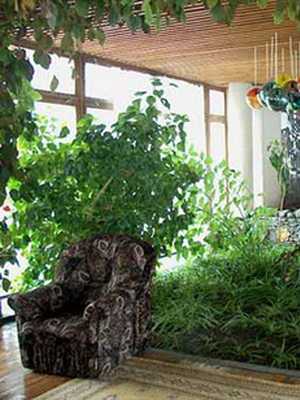
Built-in garden. A built-in garden is a permanent form of houseplant placement. It is a container built into the floor that contains soil or compost like a greenhouse bed. In the house, they are placed in spacious halls, conservatories or rooms; in offices and public buildings, they are usually built in the foyer. It is most convenient to construct it simultaneously with the construction of the building.
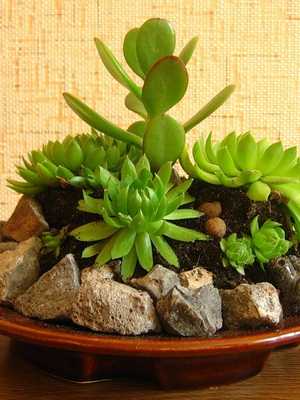
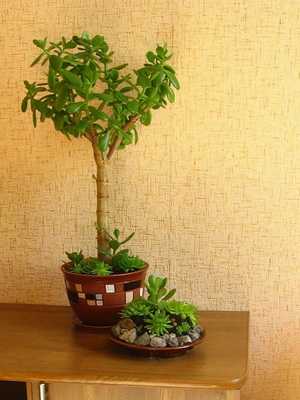
Kindergarten in a bowl. Mixed plantings in bowls contain different plants, not just one species. Such compositions are more durable than just spring bulbous flowers. This is one of the most popular types of indoor garden, which can be purchased ready-made. Usually the vessel is a round dish. There is a standard landing pattern. Tall plants such as variegated ivy are placed at the back of the bowl. Bushy or creeping and flowering plants are planted in front of him. To soften the look of the edge of the bowl, you can add ampelous, such as ivy or dwarf ficus.
Watering is a major issue – the lack of drainage holes makes over-watering difficult to avoid. If you are creating a pot garden from scratch, it is best to use a container with drainage holes and lay a layer of gravel before adding compost. Place the bowl on the pallet.
Mixed bowls are often criticized because this is not a permanent exhibition – the plants grow quickly, and it loses its decorative effect. However, it lasts longer than a flower arrangement, and plants can be harvested and planted elsewhere.
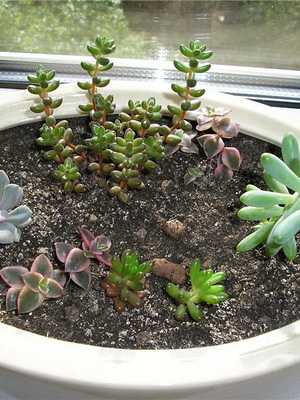

Platter garden. A small indoor garden can be arranged in shallow dishes using carefully selected succulents and cacti. The surface of the container should be simple, but a varied and colorful collection of plants can make a garden dish a standout attraction. A waterproof container can be used, but having drain holes will help avoid the risk of over-watering.
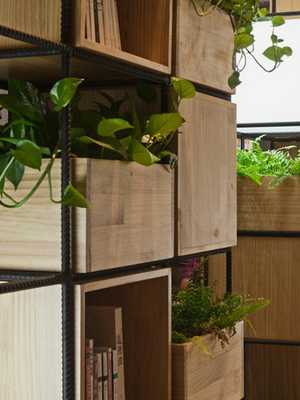

Live screen. The dining area in the living room combined with the dining room can be separated in different ways. Sometimes a wooden partition is used. Several pots in niches will help liven up such a divider. Many plant lovers prefer the live screen. A deep and wide enough container is placed on the floor, and trellises or a row of decorative supports are placed in the substrate. Such supports run from floor to ceiling. The pots are then inserted into the substrate. Suitable plants: ivy, syngonium, scindapsus, Benjamin ficus, tiny ficus, climbing philodendron and cissus.
